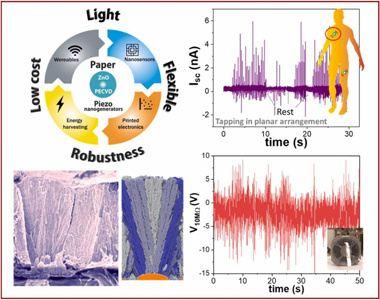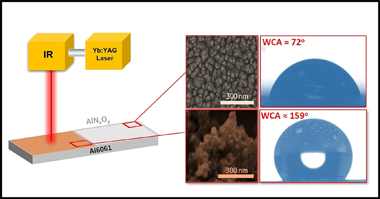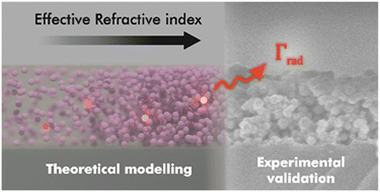Artículos SCI
2023
2023
Química de Superficies y Catálisis
Process design and utilisation strategy for CO2 capture in flue gases. Technical assessment and preliminary economic approach for steel mills
Navarro, JC; Baena-Moreno, FM; Centeno, MA; Laguna, OH; Almagro, JF; Odriozola, JARenewable & Sustainable Energy Reviews, 184 (2023) 113537
Show abstract ▽
The steel industry is the most relevant sector in emerging economies due to its application in numerous fields. However, steel manufacturing involves large energy investment and produces significant greenhouse gas emissions. The current world economic and environmental scenario therefore necessitates that improvements in the footprint of the steel industry be made without affecting its viability. Considering the present challenge, we report two possible processes for Carbon Capture and Utilization (CCU). The first process is the competitive capture of CO2-SO2, followed by CO2 valorisation to methane. However, the CO2 capture capacity and lifetime for the adsorbent after multiple cycles could be improved through preliminary desulphurization of the gas current. The improved system demonstrates net profitability in a typical stainless steel plant. Therefore, it can be implemented in an industrial setting without profitability loss to steelmaking operations, fulfilling bot the goal of reducing CO2 emissions while protecting the mainstay of the plant.
Septiembre, 2023 | DOI: 10.1016/j.rser.2023.113537
Materiales Semiconductores para la Sostenibilidad
Understanding ice and water film formation on soil particles by combining density functional theory and Casimir-Lifshitz forces
Bostrom, M; Kuthe, S; Carretero-Palacios, S; Esteso, V; Li, Y; Brevik, I; Gopidi, HR; Malyi, OI; Glaser, B; Persson, CPhysical Review B, 108 (2023) 125434
Show abstract ▽
Thin films of ice and water on soil particles play crucial roles in environmental and technological processes. Understanding the fundamental physical mechanisms underlying their formation is essential for advancing scientific knowledge and engineering practices. Herein, we focus on the role of the Casimir-Lifshitz force, also referred to as dispersion force, in the formation and behavior of thin films of ice and water on soil particles at 273.16 K, arising from quantum fluctuations of the electromagnetic field and depending on the dielectric properties of interacting materials. We employ the first-principles density functional theory (DFT) to compute the dielectric functions for two model materials, CaCO3 and Al2O3, essential constituents in various soils. These dielectric functions are used with the Kramers-Kronig relationship and different extrapolations to calculate the frequency-dependent quantities required for determining forces and free energies. Moreover, we assess the accuracy of the optical data based on the DFT to model dispersion forces effectively, such as those between soil particles. Our findings reveal that moisture can accumulate into almost micron-sized water layers on the surface of calcite (soil) particles, significantly impacting the average dielectric properties of soil particles. This research highlights the relevance of DFT-based data for understanding thin film formation in soil particles and offers valuable insights for environmental and engineering applications.
Septiembre, 2023 | DOI: 10.1103/PhysRevB.108.125434
Nanotecnología en Superficies y Plasma
Paper-based ZnO self-powered sensors and nanogenerators by plasma technology
Garcia-Casas, X; Aparicio, FJ; Budagosky, J; Ghaffarinejad, A; Orozco-Corrales, N; Ostrikov, K; Sánchez-Valencia, JR; Barranco, A; Borras, ANano Energy, 114 (2023) 108686
Show abstract ▽

Nanogenerators and self-powered nanosensors have shown the potential to power low-consumption electronics and human-machine interfaces, but their practical implementation requires reliable, environmentally friendly and scalable processes for manufacturing and processing. Furthermore, the emerging flexible and wearable electronics technology demands direct fabrication onto innovative substrates such as paper and plastics typically incompatible with high process temperatures. This article presents a plasma synthesis approach for the fabri-cation of piezoelectric nanogenerators (PENGs) and self-powered sensors on paper substrates. Polycrystalline ZnO nanocolumnar thin films are deposited by plasma-enhanced chemical vapour deposition on common paper supports using a microwave electron cyclotron resonance reactor working at room temperature yielding high growth rates and low structural and interfacial stresses. Applying Kinetic Monte Carlo simulation, we elucidate the basic shadowing mechanism behind the characteristic microstructure and porosity of the ZnO thin films, relating them to an enhanced piezoelectric response to periodic and random inputs. The piezoelectric devices are assembled by embedding the ZnO films in polymethylmethacrylate (PMMA) and using Au thin layers as elec-trodes in two different configurations, namely laterally and vertically contacted devices. We present the response of the laterally connected devices as a force sensor for low-frequency events with different answers to the applied force depending on the impedance circuit, i.e. load values range, a behaviour that is theoretically analyzed. The characterization of the vertical devices in cantilever-like mode reaches instantaneous power densities of 80 nW/ cm2 with a mean power output of 20 nW/cm2. Besides, we analyze their actual-scenario performance by acti-vation with a fan and handwriting. Overall, this work demonstrates the advantages of implementing plasma deposition for piezoelectric films to develop robust, flexible, stretchable, and enhanced-performance nano-generators and self-powered piezoelectric sensors compatible with inexpensive and recyclable supports.
Septiembre, 2023 | DOI: 10.1016/j.nanoen.2023.108686
Nanotecnología en Superficies y Plasma
Exalted dual-scale surface roughening in laser ablated aluminum capped with a transparent thin film: Wetting and anti-icing behavior
Ghemras, I; Montes, L; Lopez-Santos, C; Gonzalez-Elipe, AR; Rico, VApplied Surface Science, 630 (2023) 157357
Show abstract ▽

Near infrared laser ablation of metals, specifically aluminum, has been systematically applied to generate surface roughness. Very high laser fluences may even lead to a so called "explosive" ablation regime where roughness becomes dramatically enhanced. In the present work we have developed an alternative methodology that, uti-lizing milder laser irradiation conditions (i.e. laser fluences from 0.37 to 0.72 J/cm2), renders aluminum surfaces with a dual-scale roughness character and Sp parameter values twice or even trice the value found in reference samples. This has been possible for aluminum substrates coated with a highly transparent aluminum oxynitride capping layer. The resulting surfaces, consisting of very rough partially oxidized aluminum with negligible amounts of nitrogen species, resulted highly hydrophobic and depicted long icing delay times as required for anti-icing applications. A correlation has been found between the wetting and anti-icing behaviors, the use of a capping layer and the laser irradiation conditions. To account for this exalted roughening phenomenon, we propose that the transparent capping layer confines the laser energy within the aluminum shallow zones, delays the formation of the plasma plume and produces an enhancement in the aluminum ablation, even at relatively low laser fluences.
Septiembre, 2023 | DOI: 10.1016/j.apsusc.2023.157357
Nanotecnología en Superficies y Plasma - Materiales Ópticos Multifuncionales
Effect of the effective refractive index on the radiative decay rate in nanoparticle thin films
Romero, M; Sánchez-Valencia, JR; Lozano, G; Míguez, HNanoscale, 15 (2023) 15279-15287
Show abstract ▽

In this work, we theoretically and experimentally study the influence of the optical environment on the radiative decay rate of rare-earth transitions in luminescent nanoparticles forming a thin film. We use electric dipole sources in finite-difference time-domain simulations to analyze the effect of modifying the effective refractive index of transparent layers made of phosphor nanocrystals doped with rare earth cations, and propose a correction to previously reported analytical models for calculating the radiative decay rate. Our predictions are tested against an experimental realization of such luminescent films, in which we manage to vary the effective refractive index in a gradual and controllable manner. Our model accurately accounts for the measurements attained, allows us to discriminate the radiative and non-radiative contributions to the time-resolved photoluminescence, and provides a way to rationally tune the spontaneous decay rate and hence the photoluminescence quantum yield in an ensemble of luminescent nanoparticles.
Septiembre, 2023 | DOI: 10.1039/d3nr03348a
- ‹ anterior
- 13 of 410
- siguiente ›














